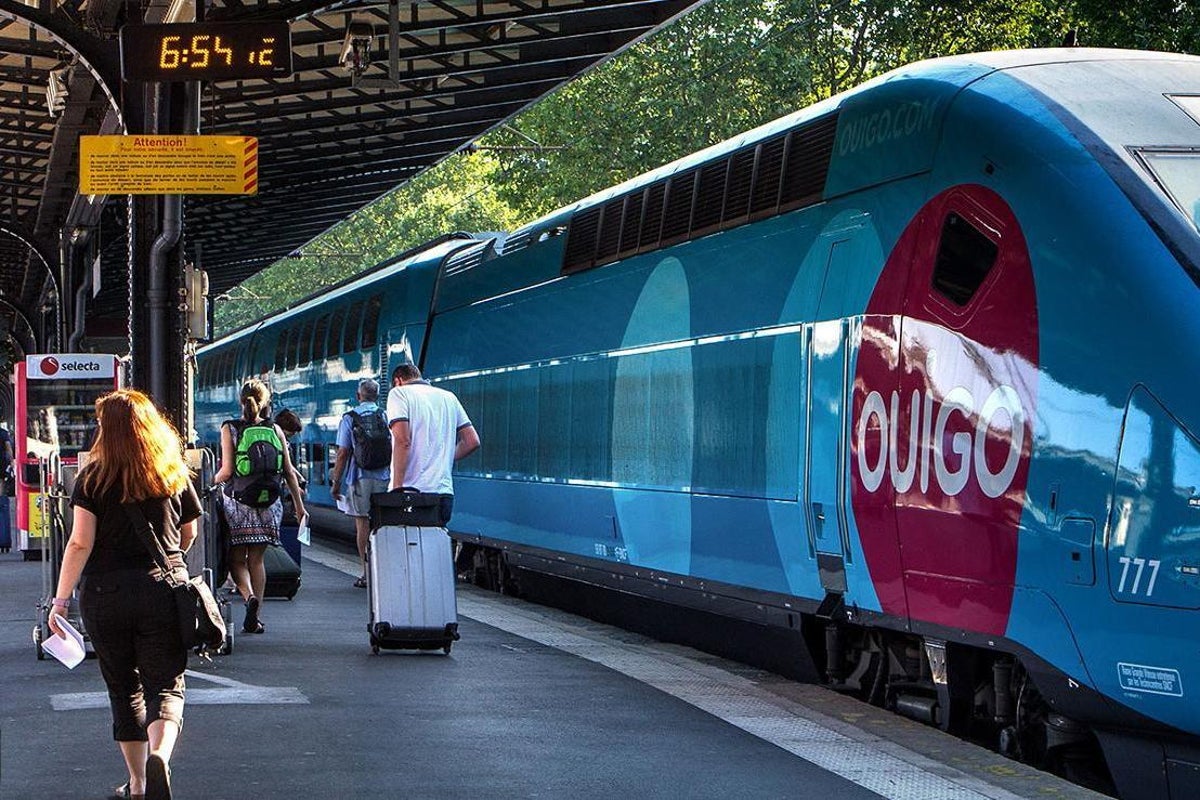
The most forlorn major railway station on the planet? Surely it must be Aix-en-Provence TGV.
A guiding principle of the outstanding high-speed rail network created by the French has long been that the alignment of the track has been paramount. Unlike 19th-century railway engineers, the designers of the lines for trains a grande vitesse (TGVs) locate stations where it suits the network rather than in the centres of towns and cities.
In the case of the high-speed station serving the Provencal birthplace of Paul Cézanne, that turns out to be 16km southwest of the centre of Aix-en-Provence: the bleak intersection where the D9 highway passes beneath the main line linking Marseille with Paris.
A bus connects Aix centre with the station every 15 minutes, and the same route extends each half-hour to Marseille airport, 10km away. It stops directly beneath the concrete box housing the station, which is handy for those of us seeking a cut-price journey rail journey to the north.
I am carefully conserving the battery life on my mobile because it contains the precious barcode entitling me to almost 500km of rail travel for just €13 (£11).
Within a minute I am in the station. Having arrived at the stipulated time (no more than 40 minutes and no less than five minutes before the train is due to depart), I could join the short queue of people at the gate to the platform. But as part of the dossier accompanying the ticket I had been warned that no food or drink was on sale, and therefore I might want to prepare a picnic for the evening journey.
With the train due to depart in 20 minutes, I join the straggle of people queuing up at the station’s only catering option, Paul. Ten minutes later, I am the proud owner of a tuna baguette and a can of Heineken – surely the very definition of living the dream? Both proved tasty and enhanced the journey, but together nearly doubled the cost of my journey. I passed the barrier without a problem, being in possession of Ryanair-sized cabin baggage. Larger and more numerous pieces of baggage are charged for, just like on budget airlines.
The sun has long departed before the 6.40pm arrives, a couple of minutes late. I am at waiting area Z, the very rear of the double-deck train, which is about half-full when it draws in. It looks like a standard TGV from the outside, but inside it has a distinct all-economy feel.
My seat is downstairs, at the back – and turns out to be next to a mother and young baby. Each to their own cabin baggage, but I can tell all our journeys will be enhanced if they have a bit more space and I can dine tout seul. Handily a couple of seats are empty, so I move from the appointed seat 239 and settle down for the journey as the train accelerates to 300km/h for what I fondly imagine will be a nonstop three-hour journey.
My laptop battery can provide enough energy for some gentle writing and keeping the phone alive, as the express hurtles north through the darkness. But then we stop, at Avignon TGV (again, a distant relation to the city) and later at Lyon airport. Fortunately any occupants of the seats to which I had relocated fail to show – presumably because they had bought low and were content to discard the tickets. Like airline tickets, they are person-specific. Unlike airlines, passengers can pop out during the brief stops to puff away at cigarettes.
The train has seen better days – I imagine it is one of the older SNCF fleet downgraded to the budget brand. French Railways is keen not to cannibalise passengers who would be happy to pay “normal” fares for standard TGVs. And so there is one more no-frills trick up the corporate sleeve.
We arrive exactly on time after a perfectly comfortable journey. Anyone heading for Disneyland Paris could not be happier. Unfortunately, as part of the devil’s bargain the vast majority of us are heading for the centre of the French capital.
Suddenly the handful of machines at Disneyland’s RER (suburban rail) station are inadequate for people wanting to buy the €5 onward ticket, and two trains depart on the 40-minute run to central Paris while I am waiting to do battle with the distinctly 20th-century technology. (I was well aware of the destination of the train in advance, and could have prepared in advance.)
Would I use Ouigo again? Undoubtedly. Despite the final destination, this is far from a Mickey Mouse operation. As with Ryanair, you need to comply with the rules – but the savings make it well worthwhile. Buying on the day for my train, the Ouigo fare was €19, compared with €78 on a “normal” TGV (and €160 on Air France from Marseille airport). As a French traveller succinctly says: “The price difference is bigger than the comfort gap.”







